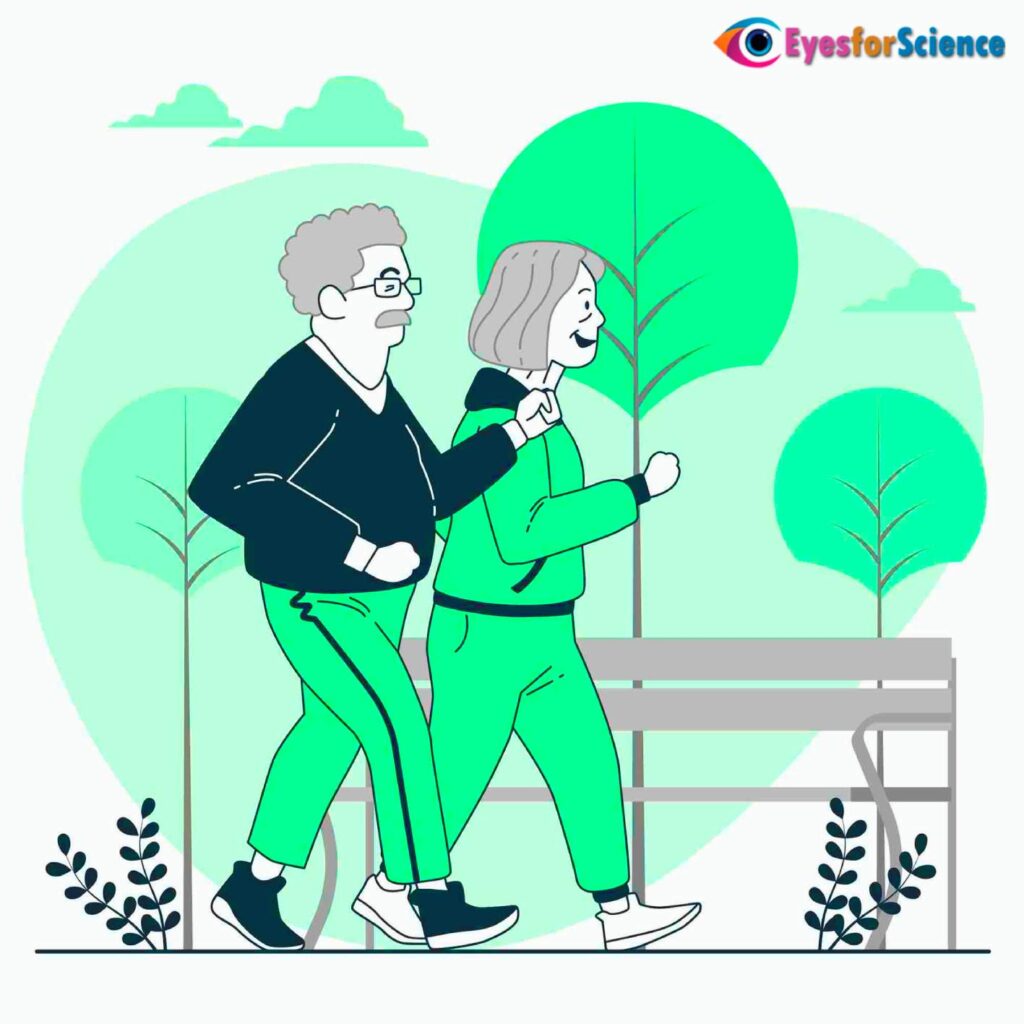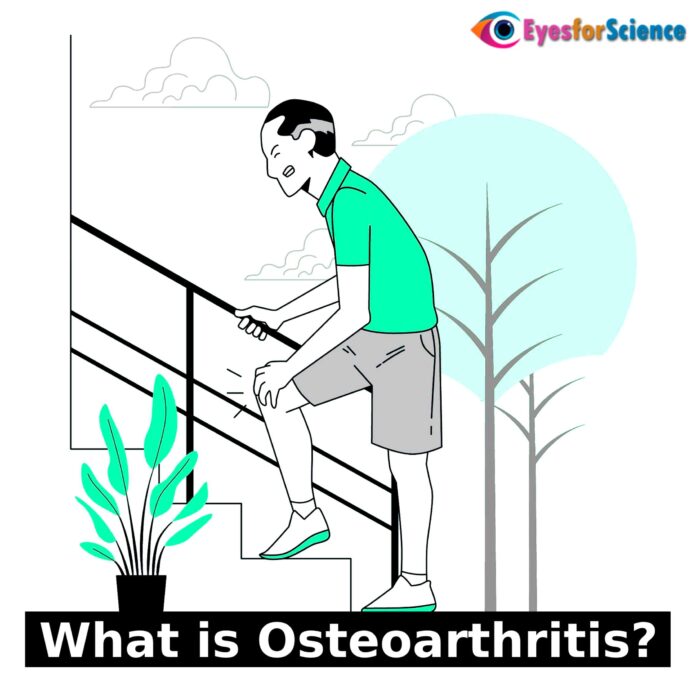Osteoarthritis is a degenerative joint disease that can affect any joint in our body. The joints that osteoarthritis affects the most include the hands, knees, hips, and spine.
Osteoarthritis is the commonest form of arthritis that commonly affects people around the globe. The risk of the development of this condition increases in older people, especially those above 55. It is a condition that occurs due to age-related wear & tear of cartilage but, it can also affect other parts of the joint. Studies have found that it also affects the ligaments, bones, and synovium (the lining of the joint).
Osteoarthritis develops gradually and becomes worse with age. It can also occur because of previous injuries or trauma affecting the joint.
What Are the Types of Osteoarthritis?
Two types of osteoarthritis are there:
Primary Osteoarthritis
Primary osteoarthritis is the most common form of osteoarthritis that primarily affects the spine, fingers, thumbs, hips, knees, and big toes.
Secondary Osteoarthritis
This form of osteoarthritis occurs because of previous joint conditions like an injury or trauma, repetitive movements, sports injuries, inflammatory arthritis, or genetic disorders.
What Are the Symptoms of Osteoarthritis?
Some of the common signs & symptoms associated with the condition include:
Pain
Osteoarthritis causes pain in the joint during or after activity.
Stiffness
Joint stiffness commonly occurs in the morning upon awakening or after periods of inactivity.
Loss of Flexibility
The range of motion of the affected joint becomes limited.
Tenderness
Even a little pressure on the joint cause tenderness.
Swelling
Swelling is always on the cards because of soft tissue inflammation around the joint.
Bone Spurs
Bone spurs can form around the joint and cause irritation.
Popping or Crackling Sound
Feeling of a grating sensation is there while using the joint. Sometimes, a popping or crackling sound also occurs.
What Causes Osteoarthritis?
Wear & tear in the protective cartilage in the joint cause osteoarthritis. When the cartilage wears down, the bones forming the joint start to rub against each other. Over time, this causes irritation, and eventually, the signs and symptoms of arthritis develop.
Not only the cartilage but osteoarthritis affects the entire joint including the bones, ligaments, connective tissues, and the lining of the joint.
What Are the Risk Factors of Osteoarthritis?
Factors that increase the risk of osteoarthritis include:
Age
The risk of osteoarthritis increases with age. People above 55 years of age are highly prone.
Gender
According to several reports and studies, women are more prone to developing osteoporosis than men. The reason for this is still under research.
Obesity
Being overweight puts you at the highest risk of developing osteoarthritis. High body weight adds more stress on the weight-bearing joint and with time, the symptoms of osteoarthritis develop.
Joint Injuries
Trauma affecting the joint and previous joint injuries may also increase the risk of arthritis.
Repeated Stress on the Joints
Repetitive stress on the joints like in athletes or sportspeople also increases the risk of developing osteoarthritis.
Heredity
Sometimes, genetics also play a role in causing this condition.
Bone Deformities
Congenital birth defects affecting the bone like malformed joints and defective cartilage can cause osteoarthritis later in life.
What is the Diagnosis for Osteoarthritis?
During the diagnosis, the doctor first performs a physical examination. During the physical examination, the doctor looks for visible signs like swelling, redness, and tenderness. Besides this, the healthcare service provider also examines the range of motion of the joint.
Besides this, the healthcare service provider also prescribes imaging tests to confirm the condition and its severity.
X-rays – X-rays can show the loss of cartilage in the joint. If bone spurs are present around the joint, x-rays can show them as well.
MRIs – Magnetic resonance imaging shows details on bones and soft tissues along with the cartilage. MRI is generally required to diagnose complex cases.
To rule out the possibility of other conditions, certain lab tests are also performed.
Blood Test – Blood tests are generally required to rule out the chances of rheumatoid arthritis.
Joint Fluid Analysis – Joint fluid analysis detects whether the painful symptoms are because of inflammation or gout rather than osteoarthritis.

What is the Treatment of Osteoarthritis?
Osteoarthritis has no cure as the condition cannot be reversed. Thus, the treatment aims at relieving the symptoms and improving the quality of life. Here are the available treatments for the condition:
Medication
The doctor prescribes medicines to improve symptoms like pain, swelling, and inflammation.
Non-Steroidal Anti-Inflammatory Drugs (NSAIDs)
OTC NSAIDs are generally helpful in relieving osteoarthritic pain. For stronger NSAIDs, a prescription is a must.
Antidepressants
Antidepressants can relieve chronic pain including the one that occurs because of osteoarthritis.
Acetaminophen
It is helpful in improving mild to moderate pain but, must be taken under prescription and in limited doses. Overconsumption of this drug can cause liver damage.
Therapies
Physical Therapy
A physiotherapist will suggest exercises to improve pain and strengthen the muscles surrounding the joint. One must do physical therapy under an expert’s guidance because doing it wrong could cause complications.
Occupational Therapy
Occupational therapy can help you perform routine activities with more ease. It can also help you relieve stress on the joints.
Transcutaneous Electrical Nerve Stimulation (TENS) Therapy
This technique uses electrical current (low voltage) to improve pain. This therapy is best to relieve short-term pain for hip and knee osteoarthritis.
Injections
Cortisone Injections
Sometimes, corticosteroid injection is applied to the affected joint. It can relieve pain for a few weeks. This injection must also be taken under prescription and in limited amounts as it can make the joint condition worse.
Lubrication Injections
Hyaluronic acid (a similar component of natural joint fluid) injections can help improve painful symptoms of the condition.
Surgery
Surgery is the last option available for the treatment. Here are a few of the common surgical options available for the treatment:
Realigning Bones
For example, if the condition has affected one side of the knee more than the other, knee osteotomy will be helpful. During the procedure, the surgeon cuts a part of the bone from above or below the knee and then adds or removes the bone wedge. This shifts the body weight from the affected part of the knee.
Joint Replacement
During joint replacement, the surgeon cuts the damaged portion of the knee and adds an artificial implant, also known as an orthopedic implant or prosthesis. The implants are generally made of medical-grade metal alloy or plastic, or a combination of both.
Joint replacement may be partial where only a portion of the affected joint is removed and replaced or complete where the entire joint is replaced with a prosthesis (an artificial joint).
How to Prevent Osteoarthritis?
Taking care of your joints is like giving them a VIP treatment pass. Now, let’s talk about preventing osteoarthritis, the serious troublemaker that can mess with your joints if you’re not careful.
Maintaining a healthy weight is like finding the perfect balance. Extra pounds put unnecessary stress on your joints, especially the knees and hips, so let’s keep it in check. Regular exercise is your medicine here; it not only helps with weight management but also keeps those joints nimble and happy. Go for a dance party or a stroll in the park; just keep those joints grooving!
Now, let’s talk about your diet – the fuel that powers your joints. Embrace healthy foods that are rich in omega-3 fatty acids like fish, flaxseeds, and walnuts. These little powerhouses are like the rockstars of joint health. They have anti-inflammatory vibes that keep the joint party going smoothly.
Hydration is the unsung hero here! Imagine your joints are at a fancy party, and water is the cool DJ spinning the beats. Hydrated joints are happy joints. So, maintain the right water balance in your body too.
Protect your joints from surprise attacks; it’s like giving them their own bodyguards. When playing sports or doing activities that could put stress on your joints, gear up with proper equipment. It’s like wearing a superhero cape for your joints.
Lastly, don’t forget about your posture. Do not sideline your spine; as it is the backbone of your body, keep it straight and strong. Good posture is the secret sauce to prevent your joints from getting grumpy.
This is your short guide to preventing osteoarthritis. Treat them well, and they’ll keep you dancing through life!








